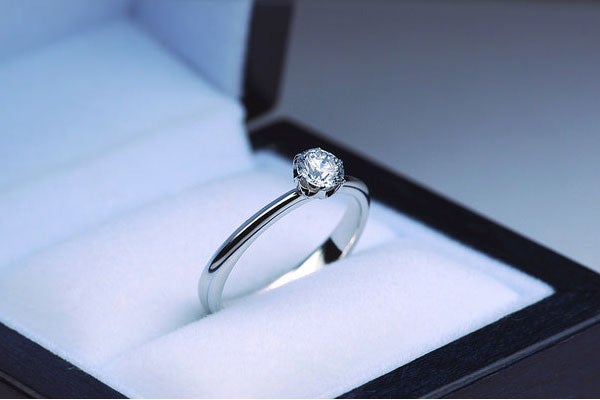
Engagement ring fail: what doomed diamonds tell researchers about consumers
Published: February 18, 2016
We're told diamonds are forever. But new research reveals that when relationships tank, so does the value of the rings meant to honour them.
A U of T study examining the resale of diamond engagement rings shows that a diamond's value is affected by the story people attach to it and whether it fits with their ideas about what a good ring needs to be.
Rings portrayed as products of divorce and other failed relationships are much less likely to sell – or more likely to sell at lower prices – than rings without a negative history.
Previous academic research claiming that conformity to a single, defined market category is associated with a product's success is not the whole story, according to Anne Bowers, an associate professor of strategic management at the Rotman School of Management. The assumption in these cases is that consumer expectations are fully met when an item cleanly fits into a category.
“In some sense, these findings are the exact opposite," Bowers says. “Here's a product that, technically speaking, fits exactly the criteria for an engagement ring, and yet you still have problems.”
Two parts of the study revealed similar findings. Analysis of data from 1.5 million eBay listings of diamond solitaire engagement rings over a 13-month period showed that rings with no disclosed negative history were most likely to sell, and at a higher price. Rings whose sellers disclosed a divorce or other failed relationship – marked by such comments as “not going to happen,” or “right ring, wrong guy” – were less successful.
A separate attitudinal survey showed that even though participants believed a diamond ring from a divorce was most likely to be authentic -- as compared to a ring from a happy marriage or a jewelry store – these particpants were reluctant to pay a comparable price for it.
The results mean that researchers should "think more carefully about what it is that defines whether or not you fit into a market,” Bowers says. “Social characteristics” are part of this process.
If marketers can tap into or develop different consumer expectations – such as an interest in the size or cut of the stone or simply getting the best possible price – there is potential to make inroads on the primary ring market. This is what online used-ring marketer I Do Now I Don't has been trying to do.
As for the lovelorn stuck with a ring to unload? “Actual purchases versus number of rings listed suggest that sales are rare in online markets,” Bowers says. “Anecdotally speaking, if you want money quickly, the best hope you have is to try to sell it back to the jeweller you bought it from. But be prepared to take a big loss.”
The study is published in Advances in Strategic Management.



